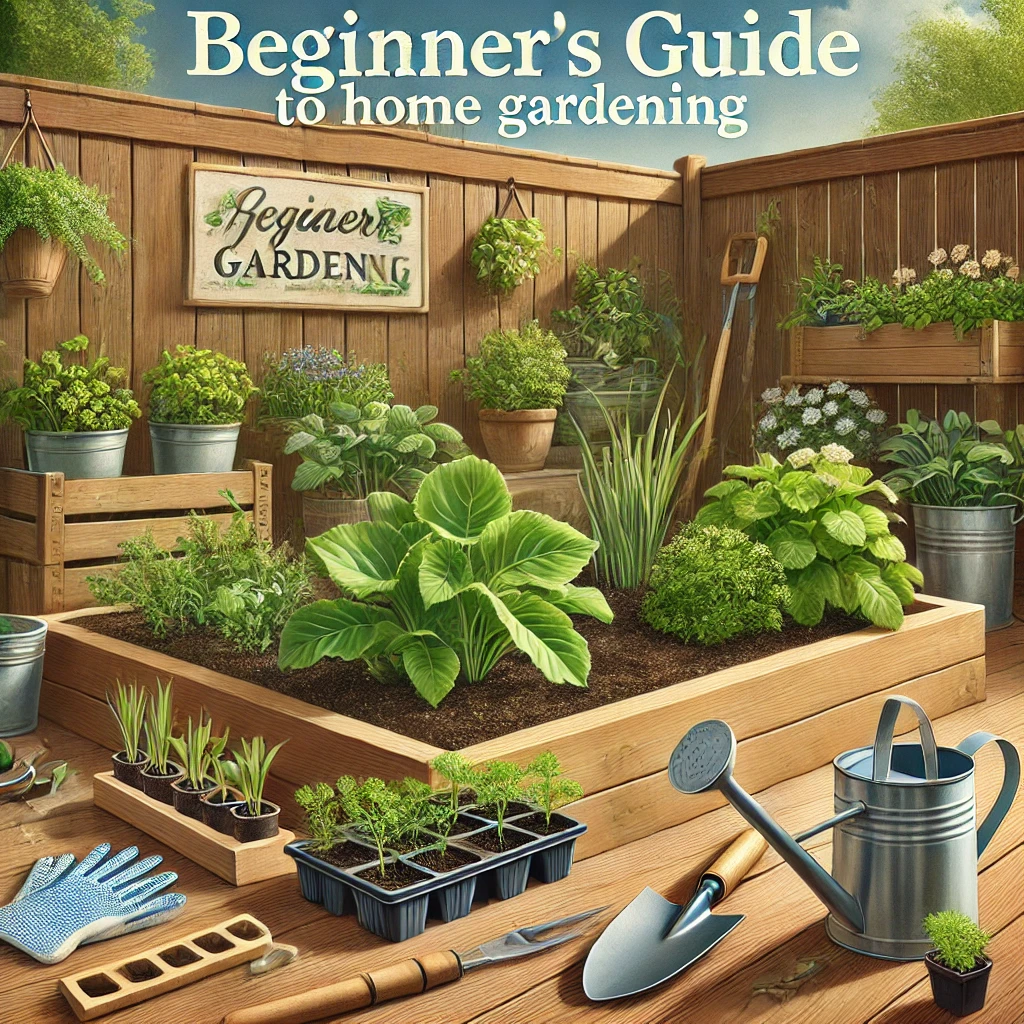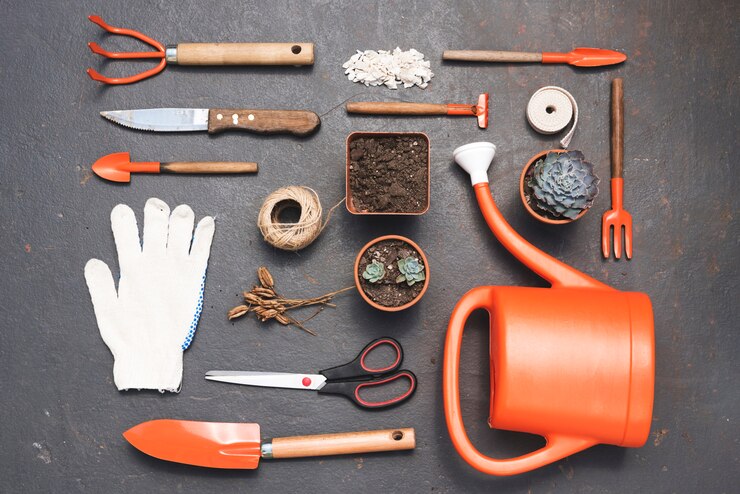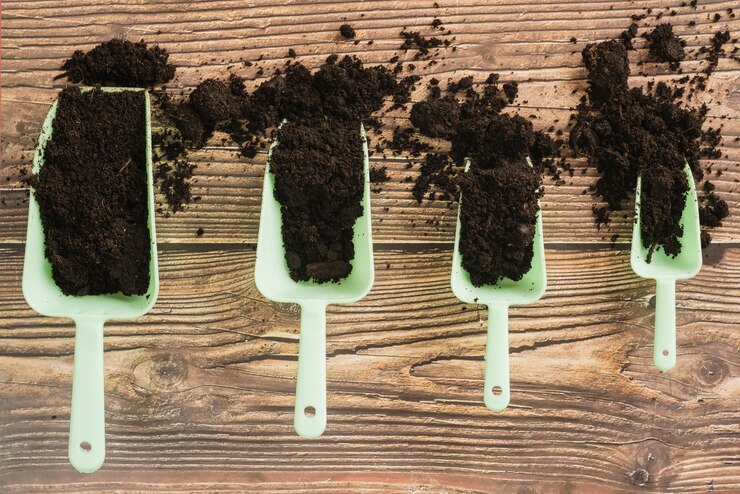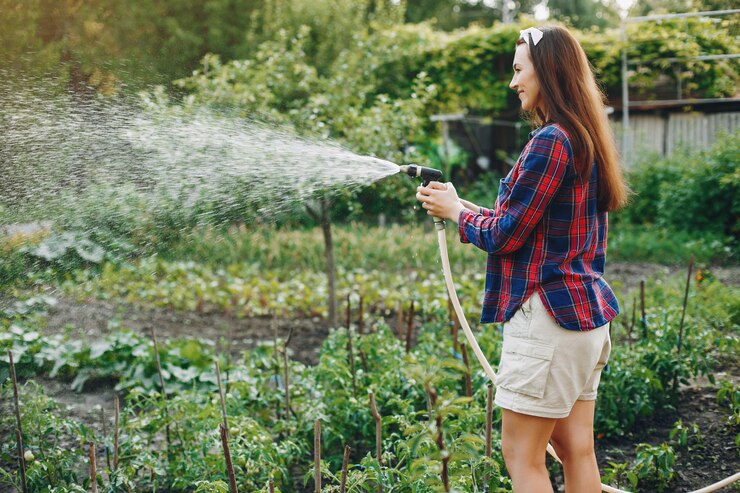Looking for a fun, easy, and eco-friendly hobby? Look no further – it is time to start home gardening for beginners. Gardening is a great way to get the opportunity of growing fruits and vegetables, take pride and joy of stunning flowers in bloom outside in your garden or on your balcony.
Moreover, when you engage in gardening, you’ll have fresh vegetables, fruits, and herbs while suffering less anxiety, and stress, or improving mental health and getting in touch with the environment.
This article will explain everything that a home gardening for beginners needs to know about gardening including plant selection and making a garden beautiful and green. It’s time to learn the basics of home gardening and experience growth like never before!
Why Start Home Gardening?
The thought of starting a garden may be intimidating but do not fret because there is light at the end of the tunnel and with proper knowledge it is a very rewarding experience. Below are some points as to why home gardening is beneficial:
Sustainability: When you can grow your own vegetables and herbs, you have less need to shop and therefore reduce carbon emissions and waste.
Cost Savings: Self-grown produce can be quite cost-effective in the long run as you will have to buy fewer retails of groceries.
Health Benefits: Gardening offers some exercise and eating ‘home’ fruit and vegetables promotes the diligence of nourishing oneself.
Mental Wellness: Nature and plants are wonderful for one’s well-being and their care shifts focus away from day-to-day worries.
Essential Tools for Home Gardening
For home gardening for newbies, it is important to realize that the right tools are needed to make this process easier and more fun. These are some of the essential tools that would be helpful for beginners:
Gardening Gloves: To prevent hands from being punctured and getting dirty or bitten by pests.
Hand Trowel: Ideal for making small holes for planting, shifting plants, and weeding.
Watering Can or Hose: Providing water to the plants is essential and can be achieved using either watering cans or garden hoses.
Pruners: Required for trimming and shaping the plants as they grow in size.
Garden Fork: Helps to flip the soil, which is also effective in loosening and breaking up clods of soil.
How to Select the Best Plants for Your Home Garden
When establishing your home garden, selecting the right kind of plants is very important because it will help in achieving the main aim of the gardening project. The following points should be taken into consideration.
1. Climate and Season
Check what has previously done best in terms of plants for your area. It is good to start growing plants suited for your current season. For example, lettuce and peas do well in spring or autumn while tomatoes and peppers do well in summer.
2. Plants’ Sunlight Requirements
Almost all plants have certain light requirements. Determine how much sun is available in your gardening area and choose suitable plants.
Full Sun: 6-8 hours of sunlight (e.g. tomatoes, peppers).
Partial Sun/Shade: 3-6 hours (e.g. leafy greens, herbs).
Shade: less than three hours (e.g. ferns, mosses).
3. Soil Type
Soil is rich in healthy plants and is always the foundation for a thriving garden. Understanding what type of soil you have can be done through a simple test which will help you understand what type of plants to grow. It is also important to mix with compost so as to balance nutrients in the soil for subsequent growth.
4. Space Constraints
For small spaces or containers, grow compact plants like cherry tomatoes, herbs and salad greens. For larger gardens, there should be no worries with the plant arrangements as there is adequate space even for spacing.

Setting Up Your Garden
Step 1: Choose the Type of Your Garden
You can create several types of gardens depending on your space and preferences. Such gardens include:
Raised Bed Gardens: Raised beds are suitable for people with poor soil who desire to have some control over soil quality and drainage.
Container Gardens: Perfect for patios, balconies, or limited spaces since you can move plants around as necessary.
In-Ground Gardens: Suitable gardening style for those who have sufficient space and good soil.
Step 2: Prepare the Soil
As far as gardening is concerned, there is no way of succeeding without healthy soil. Prepare your soil by first loosening it then removing any rocks or weeds that may be present and then incorporate compost or organic matter to enhance it. It is also important to note that good drainage is also important; hence avoid dense clay or overly sandy soil unless modified.
Step 3: Plan out your layout
Design every aspect of your garden. This will ensure that the plants have enough space. Put taller plants behind shorter ones so that they do not cast a shadow on them. Think about companion planting – to plant two plants of species that complement one another (e.g., tomatoes and basil).
Step 4: Planting
Seed packets or plant tags will give you the necessary information about the depth for planting and the spacing between them. For seedlings, make a hole slightly larger than the root ball, plant the plant then cover the roots gently with soil.
Caring for Your Garden
Good care is important if you want to have a good garden. These tasks include the following important ones:
1. Watering
Most of the time watering is done early in the morning or towards late afternoons. Just bear in mind, most plants do prefer it to be moist all the time, but too much moisture can encourage root disease.
2. Fertilising
You should apply fertiliser in a fixed amount and schedule. The best way is to utilise compost or manure to avoid using chemicals. Increase fertilisation more during the active growth stage of the plants.
3. Pruning and Weeding
Be sure to remove dead or diseased leaves by pruning, and encourage further growth. Always keep weeding; this will avoid plants having to compete for nutrients, water, and light.
4. Pest Control
Check the plants for visible pests. If you spot any, try to use natural ways to get rid of them where possible. Enhance the ecosystem with ladybirds and other beneficial bugs or natural pest repellent agents.
Troubleshooting Common Gardening Problems
1. Pest infestations
Aphids, slugs, and caterpillars are known to be sustained by pests. Natural pesticides like neem oil, soap sprays, or beneficial insects can help manage infestations.
2. Yellowing leaves
Yellowing of plants may also be due to excessive watering or not enough water, which can lead to low nutrient reserves. These habits should be checked and possibly a balanced fertiliser should be used.
3. Insufficient Supply of Resources
In case the plants are not growing as anticipated, it would mean that the plants require more sunlight, nutrients and/or better-draining soil. Make the necessary changes in accordance to the plant you are dealing with.
4. Drooping Wells
Drooping may occur due to too much heat, drought, or even root problems. Make sure that watering is done regularly especially during hot days where avoiding strong sunlight is also a good option if the plants need protection from the exposure.
Monthly Updates – Tips for Adjusting your Garden to the Seasons
Having a garden in the summer, winter, spring or autumn means that you have to have different approaches for the different times of the year. This is how a gardener can do to keep the garden in good condition for each season:
Spring: Begin the growing season with crops such as leaf vegetables, root vegetables and herbs. It is advisable to look out for frost dates and help young crops in case there is a frost.
Summer: The hotter seasons make it essential. If plants are harvested often, it will help in making them grow more, and plants should be protected from the sun’s harsh rays.
Autumn: Start growing cool-season vegetables like carrots, broccoli, and kale. Also remove any rubbish that could be used by pests for hibernation.
Winter: If the winters are mild, then consider using mulch or row covers on plants in stake gardens. In places where it is cold outside, it is also possible to grow plants indoors or in containers.
Starting Small: Indoor and Balcony Gardening
For those who do not have a backyard or an adequate amount of land, indoor gardening or balcony gardening is an excellent alternative option.
There are certain houseplants grown for cooking purposes such as herbs including basil, mint and rosemary.
Easy to Start: Little seedlings that will not take as long as growing about 1-2 weeks to reach full size, nutrient-packed greens that can easily be grown on a windowsill.
Fruits and Vegetables in Containers: Tomatoes, peppers and even dwarf fruit tree varieties should be kept in pots or containers on your balcony.
Wrap Up
Home gardening for beginners is one experience that allows you to get closer to nature, makes access to organic produce easier and offers benefits to overall health and wellbeing. Anyone can have a dream garden with the use of proper tools, careful planning and regular maintenance regardless of their skill set and available area.
Get started with small goals and increase them gradually while watching your green paradise grow. Attention to gardening wants more than just focus on plants; it focuses on creating a space filled with tranquility, elegance and a sense of accomplishment. Why wait? Join the movement today and get started with home gardening!



